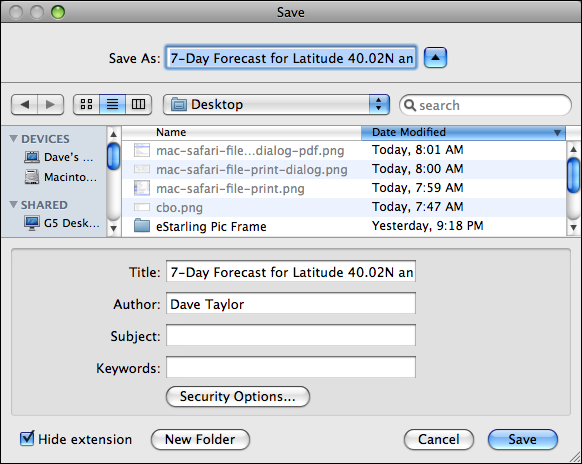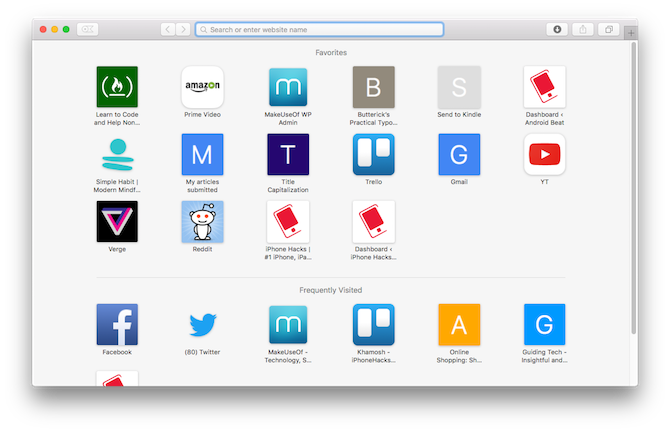This site contains user submitted content, comments and opinions and is for informational purposes only. Apple may provide or recommend responses as a possible solution based on the information provided; every potential issue may involve several factors not detailed in the conversations captured in an electronic forum and Apple can therefore provide no guarantee as to the. Safari is the built-in browser on Mac, iPhone, iPad, and Apple Watch. Fast and energy efficient, Safari delivers innovative features while also protecting user privacy. Safari is built to ensure websites keep working as expected while blocking unwanted cross-site tracking. Safari also minimizes the amount.
Jill writes: Whenever I try to open a PDF in Safari, I just get a blank screen. Isn't Safari supposed to be able to open PDFs by itself? I could've sworn it used to.
Hi Jill! Yes, Safari can and should be able to open PDF files directly in the browser window.
Can't open PDFs in Safari? An old browser plug-in may be to blame.
Safari Mac Search Engine
It's possible, though, that an old browser add-on—or 'plug-in,' as they're called—is getting in the way.
Safari Mac Screenshot
Microsoft autoupdate mac download. I'm guessing that a long time ago, you downloaded an older version of Adobe Reader (the granddaddy of all PDF readers) that went ahead and installed a PDF viewer plug-in for Safari.
The PDF plug-in probably worked fine until a couple of years ago, when Apple released a new, PDF-friendly version of Safari (version 5.1, to be precise) that doesn't play nice with older versions of the Adobe plug-in (specifically, anything older than version 10.1.3).
So, what happens if that older version of the Adobe PDF plug-in is still installed on the new Safari?
Simple: clicking on PDF links will give you nothing but a blank page.
Luckily, there's an easy remedy: digging into Safari's plug-in directory and deleting the old plug-in (or plug-ins, depending on how many old versions are still sitting there).
Here's how…
Drag any old Adobe PDF Viewer plug-ins into the Trash, then restart Safari.
Note: Make sure to back up your Mac before messing around with any system files.
- Press and hold COMMAND + TAB to bring up your Mac's application switcher, then keep tapping the TAB key while still holding down the COMMAND key until the selector lands on Finder. When it does, go ahead and release the COMMAND and TAB keys.
- Click on the Go menu at the top of the screen, select 'Go to folder…' then copy and paste this folder 'path' into the pop-up window:
/Library/Internet Plug-ins
- A new folder window will appear, showing a list of all the browser plug-ins installed in Safari—and at the very top (if the list is sorted alphabetically), you should see one or more files labeled 'AdobePDFViewer.' Drag the old Adobe plug-ins into the Trash, then quit and restart Safari.
- Try opening a PDF in Safari again—and yes, it should work, using Safari's own 'native' PDF reader.
Now, want to open PDFs in Safari using a fresh Adobe PDF Viewer plug-in? Try this:
- Visit this page to download and install the latest (and free) version of Adobe Reader.
- Quit and re-launch Safari, then open a PDF file directly in the browser; when you do, the PDF should open using your new Adobe Reader plug-in.
Looking for more Mac tips? Click here!
Related posts:

The PDF or portable document file is an amazing way to store and share the website page. These are not-destructible and maintains the shape, size, and font style.
Within the Safari browser, one can easily save a webpage as a PDF file. You can share the PDF file online as an email attachment, or transfer to your other Apple devices using AirDrop.
Related:How to Print and Export as PDF using Safari macOS?
Unlike Chromium browsers like Google Chrome, Microsoft Edge, etc. which are prebuilt with Save as PDF option, the Safari does not have one. However, the Safari browser has something known as Markup that works exactly like Save as PDF, but with screen size limitation.
How to Save Webpage as PDF in Safari iOS/iPadOS?
You can easily save the website page into PDF file format and store locally on the iPhone or iPad. These PDF files can be used as offline files for reading.

The PDF or portable document file is an amazing way to store and share the website page. These are not-destructible and maintains the shape, size, and font style.
Within the Safari browser, one can easily save a webpage as a PDF file. You can share the PDF file online as an email attachment, or transfer to your other Apple devices using AirDrop.
Related:How to Print and Export as PDF using Safari macOS?
Unlike Chromium browsers like Google Chrome, Microsoft Edge, etc. which are prebuilt with Save as PDF option, the Safari does not have one. However, the Safari browser has something known as Markup that works exactly like Save as PDF, but with screen size limitation.
How to Save Webpage as PDF in Safari iOS/iPadOS?
You can easily save the website page into PDF file format and store locally on the iPhone or iPad. These PDF files can be used as offline files for reading.
Here are the steps to save the webpage as PDF file in Safari browser on iPhone or iPad:
- Launch the Safari browser app on iOS/iPadOS.
- Open the Website URL that you want to save as PDF.
- Tap on the Share icon on the safari window.
- Choose the Markup option from the list.
- If needed, you can add some markups and highlights on the page.
- Tap on the Done command button, and choose the location.
- Tap on the Save button to save the page as PDF from Safari to local storage.
This feature not only helps in adding the markups or screen highlights but also save the screenshot as PDF. The PDF will be created and available in the chosen location, either iCloud or local storage.
The only limitation I found using this tip is that you won't be able to save a complete webpage as PDF, however, only the part of the screen that visible. The rest will be trimmed out, just like the screenshot.
Bottom Line: Safari iOS/iPadOS Save as PDF
Pack office 2016 mac. The Safari browser allows us to save a webpage as PDF that can be used as an offline file or share externally using various mediums. While creating the PDF file, you can also add markups and highlights.
I use the save as PDF option in Safari when I need to take a print of a page. Since the PDF file does not alter when shared, I transfer the PDF file directly to the printer. I even use the Save ad PD in Safari to save pages for offline access. Mp4 to mpeg2 mac.
Similarly, you can also save page as PDF in Safari mac computer. The files can be later launched within the safari browser without the need of any PDF reader on a mac computer.
Let us know how you what do you feel about using the save as PDF option within the Safari browser? And how do you use it?
Lastly, here are the recommended web browsers for your computer and mobile phone that you should give a try.
| Windows | MacOS | iOS | Android | Linux |
|---|---|---|---|---|
| Chrome Windows | Chrome Mac | Chrome iOS | Chrome Android | Firefox Linux |
| Firefox Windows | Safari Mac | Safari iOS | Edge Android | Chrome Linux |
| Edge Windows | Firefox Mac | Edge iOS | Samsung Internet | Edge Linux |
If you've any thoughts on How to Markup and Save as PDF in Safari iOS/iPadOS?, then feel free to drop in below comment box. Also, please subscribe to our BrowserHow YouTube channel for videos tutorials. Cheers!
